I hope you’ve been keeping up with my biweekly Hebrew verbs lessons on YouTube – if you haven’t, it’s not too late to start!
I explain Hebrew verbs in a way that’s easy for students at all levels to understand, teaching the conjugation patterns, and offering practice exercises at the end of each lesson, so you can put what you learn to use right away. Each Hebrew verbs lesson starts with a review of the practice exercises, so you’re not on your own – I’m here to help you learn!
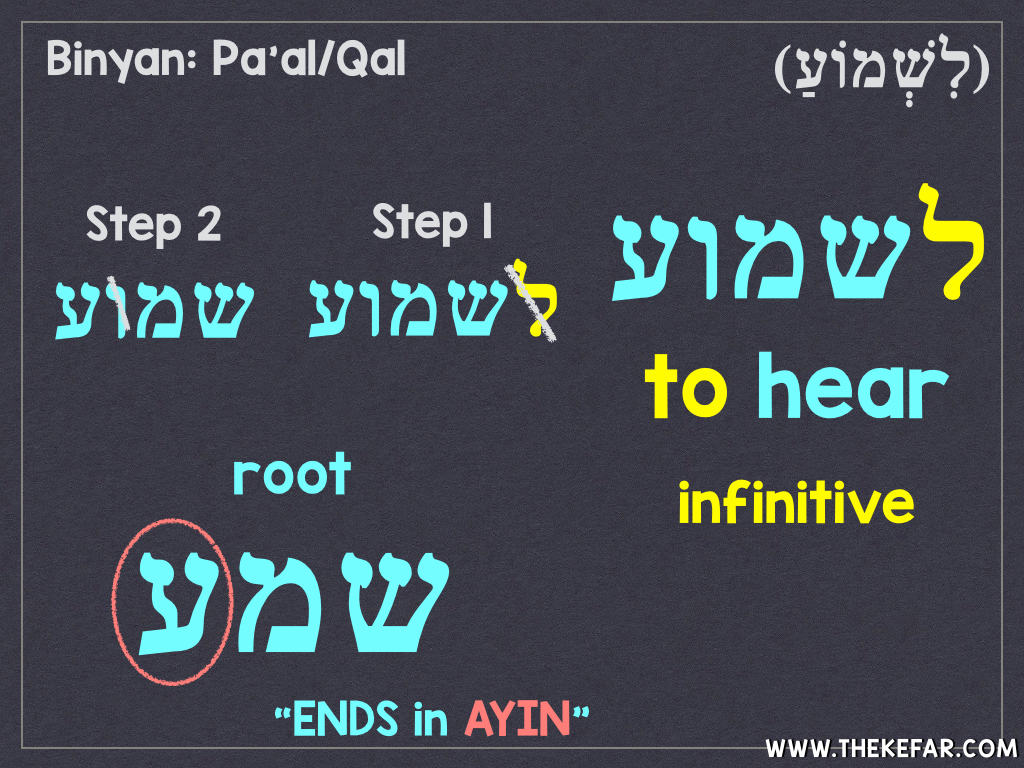
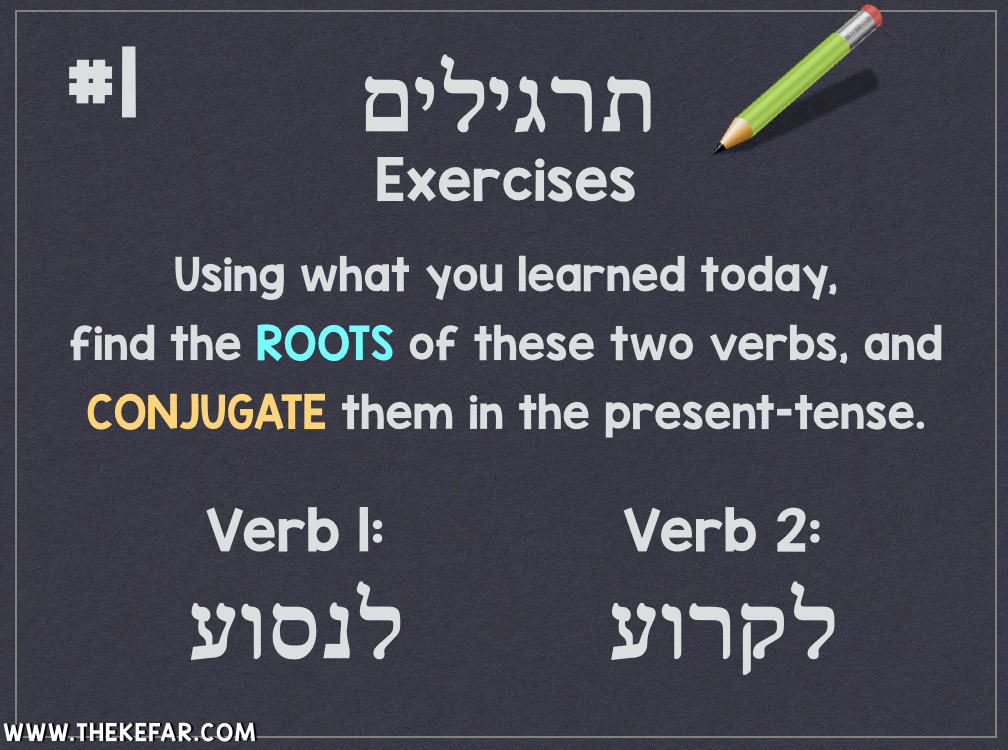
For the last several weeks, I’ve been teaching how to conjugate Hebrew verbs in the paal binyan, or paal verb structure. There are several conjugation within the paal binyan, so we focus on one group each lesson. After the first three Hebrew verb lessons, I did a cumulative review, which gave students a chance to test their understanding in a low pressure way.
Hebrew verb lessons post every other Tuesday at 2 pm EST, and today’s lesson will be our second cumulative review. I created these free Hebrew Verb Conjugation Charts: Present-Tense to help you both with your Hebrew studies, whether you watch my videos or not (but you should…I’m just saying).
This Hebrew Verb Conjugation Chart: Present-Tense has room for you to conjugate three Hebrew verbs; in the columns to the right, you’ll note the verb’s infinitive (the “to” form) and what it means, its root, and the binyan/verb type. Here, you might want to note an important characteristic of the Hebrew verb and/or root, like whether the root ends in ayin or there’s an AH-CHA letter in the middle. (If you don’t know what I’m talking about, seriously, watch my videos!) You’ll write the present-tense conjugations to the left.
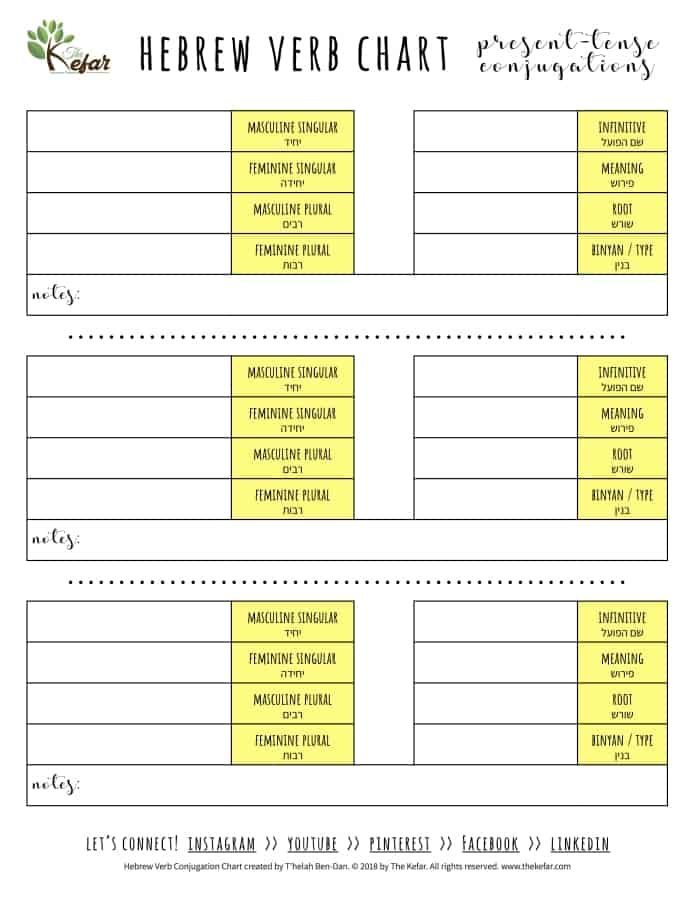
If you want to fit more Hebrew verbs on a single sheet, you might prefer my Hebrew Verb Conjugation List: Present-Tense.
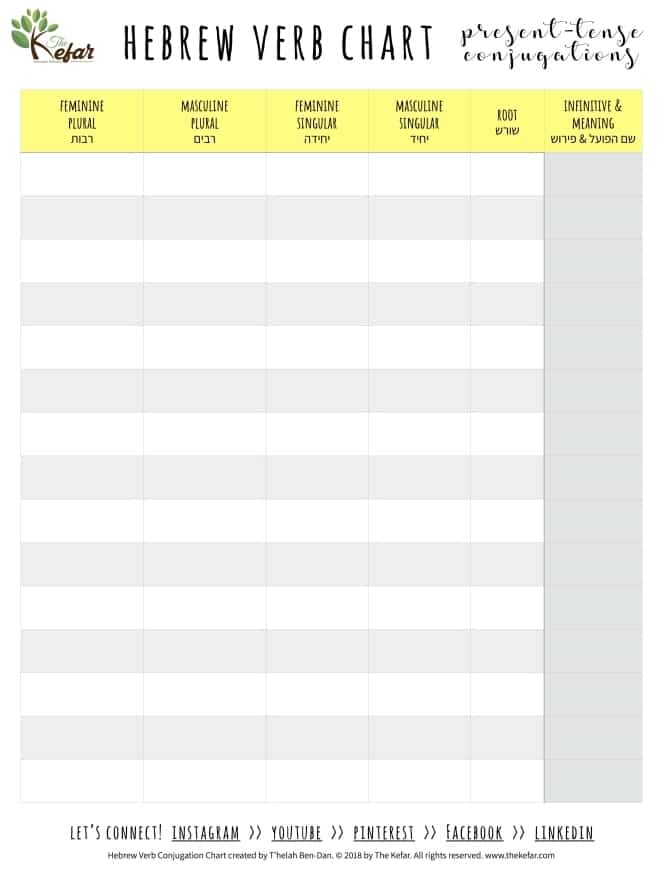
These Hebrew Verbs Conjugation Charts: Present-Tense are FREE for your personal, non-commercial use. If you have any feedback – positive or constructive – I’d love to hear it. Happy studying!
-T’helah 💙
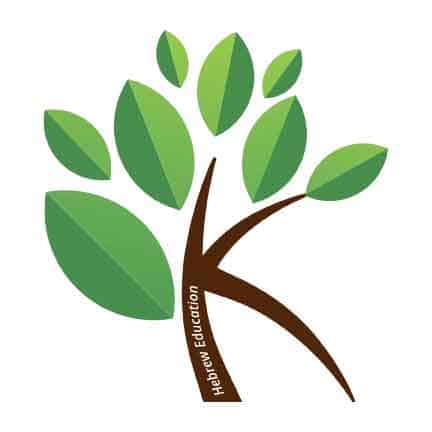
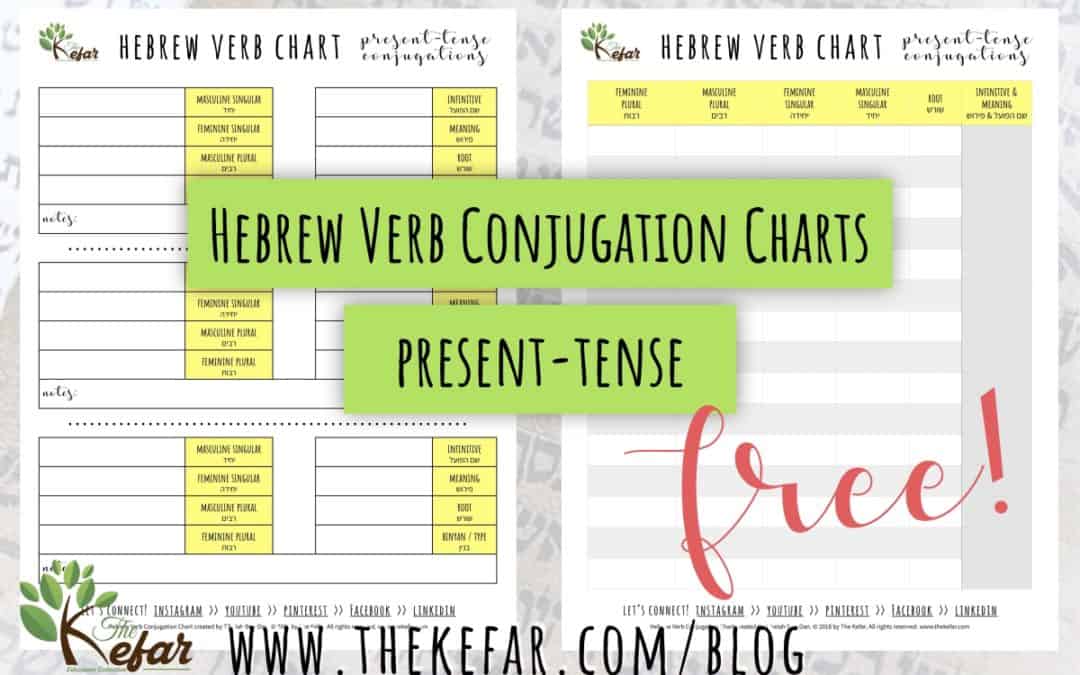
Thank you for what you do. 🙂
Hi T’hela, I have been studying Hebrew on and off for years and have recently become frustrated with my own stagnation (my fault!). I really enjoy your verb videos, I’m up to number 19 now. Is it possible to download your verb tables? The differentiation in colours (prefixes and suffixes) really help me to remember.
Also, could you add me to your Facebook group? I recently requested to be added but I don’t think it’s happened.
Your teaching is very clear and concise, thank you!
Janet